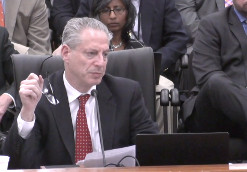The main obstacle to selling Santee Cooper is nostalgia
It finally hit me this week. Santee Cooper is a 1970 Pontiac Firebird Trans Am. Very cool then, but just not practical now.
At 12.8 miles per gallon, a new driver wouldn’t do the Firebird much good. Likewise, Santee Cooper, with debts right at $15 billion including interest, needs a total makeover, not just new management.
We have known this for years. I said so in print in 1995.
But in the fight for the privatization of Santee Cooper, we also knew it would be hard for some in the General Assembly to get past the nostalgia.
That’s why this week’s meeting of the committee charged with evaluating Santee Cooper was a huge step forward. In that session, the Governor along with Senate and House members, heard from ICF, the firm hired by the Committee to receive proposals for the purchase (and/or management) of Santee Cooper. Largely unknown in South Carolina, ICF was founded in the late 1960s in Washington, D.C. as a venture capital firm that reorganized in the early 1970s to “focus on solving energy challenges.” Now working around the world, their reputation has been summarized by one utility executive: “Whenever we have something big, hairy, complex and just ugly, we always bring ICF in.”
Big? Hairy? Complex? Ugly? Um, unfortunately, that would be Santee Cooper.
The lead ICF consultant on the Santee Cooper project, Judah Rose, briefed the Committee on the critical elements for those wishing to own or manage Santee Cooper and how they would “grade” those proposals: experience, financial support, purchase price, plans for handling the $15 billion debt, and what parts of Santee Cooper it would want to buy. Also part of the scoring would be how the interested parties would treat existing employees and their pensions, and whether Santee Cooper would continue to have a South Carolina-based corporate headquarters.
This is quite a turn of events! For years we’ve heard a host of “myths” about why Santee Cooper could never become private. In our view, there are ten “fake hurdles” to sale.
Our only concern in the ongoing saga of government-owned Santee Cooper is this idea of “management change” as a solution. We simply don’t believe that a change in leadership (as proposed by Dominion Energy and others) can recoup $15 billion in debt any more than a new driver can get 30 mpg from an old Firebird. Santee Cooper needs the boost that only an infusion of free enterprise can provide. It is a truism at this point, but worth repeating: the debt must be addressed. A government utility can turn to only ratepayers or taxpayers to do that, but if Santee Cooper were owned by a private firm, it would have a host of tools, including paying it or converting it.
Free enterprise built this nation. It can build a new Santee Cooper.
Photo: Lead ICF consultant on the Santee Cooper project, Judah Rose, at the Nov. 13 meeting of the Public Service Authority Evaluation and Recommendation Committee. Courtesy of SCETV.





